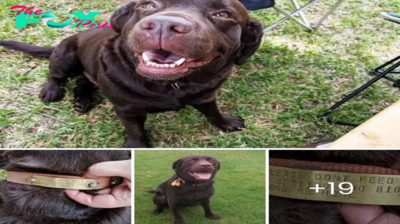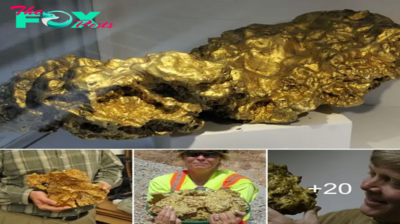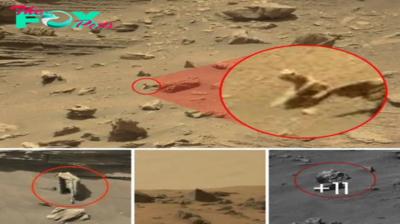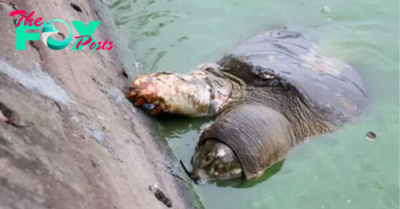UFO Aliens
Frankenstein’s Twist: Unveiling the Truth Behind a Creepy 100-Year-Old Japanese ‘Mermaid’ and Scientific Discoveries Uncovered
A bizarre ‘mermaid’ that seems to be part fish, part monkey, and part reptile is being probed by scientists in a bid to unravel its mysteries.

The mummy was brought back from Japan by an American sailor and donated to the Clark County Historical Society in Springfield, Ohio, in 1906.
With a grimacing face, strange teeth, oversized claws, fish-like lower half, and downy layer of grey hair, it’s been giving museum visitors the creeps for decades.
But now its secrets could be revealed, after the so-called mermaid was X-rayed and CT scanned for the first time in an effort to decipher its true nature.
Joseph Cress, a radiologist at Northern Kentucky University, said: ‘It seems to be a hodgepodge of at least three different species externally.

A bizarre ‘mermaid’ that seems to be part fish, part monkey, and part reptile is being probed by scientists in a bid to unravel its mysteries


The mummy was brought back from Japan by an American sailor and donated to the Clark County Historical Society in Springfield, Ohio, in 1906
This Mysterious creature – dubbed a ‘mermaid globster’ – caused a stir when it washed up on a beach in Papua New Guinea
‘There’s the head and torso of a monkey, the hands seem to be that of an amphibian almost like an alligator, crocodile or lizard of some sort.
‘And then there’s that tail of a fish – again, species unknown.’

He added: ‘It is obviously fashioned, almost Frankensteined together – so I want to know what parts were pulled together.’
Natalie Fritz from the Clark County Historical Society said the oddity was a ‘Fiji mermaid’ – a hoax creature popularised by P.T. Barnum.
Barnum, whose life inspired the 2017 blockbuster The Greatest Showman, exhibited a similar specimen at his American Museum in New York before it burned down in 1865.
In Japan itself, some legends say mermaids grant immortality to whoever tastes their flesh.
At one temple in Asakuchi, a Fiji mermaid was actually worshipped – though it was subsequently found to be made of cloth, paper, and cotton, decorated with fish scales and animal hair.

In the US, however, such mermaids were curiosities.
‘Fiji Mermaids were a part of collections and sideshows in the late 1800s,’ said Fritz.
‘We’ve heard some stories from people in the community.
‘Some remember seeing it on display in Memorial Hall, the home of the historical society from 1926 to 1986.

The so-called mermaid was X-rayed and CT scanned for the first time in an effort to decipher its true nature

Joseph Cress, a radiologist at Northern Kentucky University, said: ‘It seems to be a hodgepodge of at least three different species externally’

‘There’s the head and torso of a monkey, the hands seem to be that of an amphibian almost like an alligator, crocodile or lizard of some sort,’ Cross said
‘One woman, whose father was the curator in the 1970s recalls that it ‘scared her to death’ when she would visit her dad at work.’
Fritz added that the mummy could date back to the 1870s, when records showed the original donor had served in the US Navy.
Dr Cress said the CT scanning would allow them to pick out ‘slices’ of the artifact and hopefully establish whether any part of it had once been a real animal.
‘By doing that it gives us more data,’ he said.
‘Do those nostrils continue up into what we think is a legitimate nasal cavity, and how deep do they go?
‘Because we can see it front to back and even side to side.
‘Can you see the ear cavity continuing to where it would then connect to the brain?
‘So we’re doing that to all parts of this Fiji mermaid, not just the head and facial region, but also the thoracic region, and then that tail end.’
The data will be sent to experts at Cincinnati Zoo and the Newport Aquarium to hopefully identify what creatures – if any – were combined to form the mermaid.
-

 UFO Aliens4m ago
UFO Aliens4m agoUFO Expert Reveals Hints of Secretive Site Housing Crashed Alien Spacecraft, Enigmatic Location Shrouded in Mystery
-

 UFO Aliens4m ago
UFO Aliens4m agoLas Vegas Resident’s ‘Terrifying’ UFO Encounter: Police Body-Cam Captures ’10ft Aliens’ Sighting in Backyard, Sparking Conspiracy Theories
-

 UFO Aliens4m ago
UFO Aliens4m agoMysterious Sighting: ‘UFO’ Spotted on the Dark Side of the Moon in Daylight Video, Sparking Alien Conspiracy Theories
-

 UFO Aliens4m ago
UFO Aliens4m agoMysterious Phenomenon: Hundreds of Sheep Seen Silently Walking in an ‘Unnerving’ Circle Formation in Many Places All Over The World. Alien Intelligence Controls Sheep?
-

 UFO Aliens4m ago
UFO Aliens4m agoPeru’s Enigmatic Findings: Evidence of Extraterrestrial Contact or Unexplained Phenomena Sparks Intense Debate and Speculation
-

 UFO Aliens4m ago
UFO Aliens4m agoAncient Structures Vs. Alien Tech: The Mystery of Area 51’s Gigantic Pyramid and Eye of Horus. What Do They Want To Do?
-

 UFO Aliens4m ago
UFO Aliens4m agoThe Braz-alien Rainforest: Mysterious Creature Spotted in Amazon Jungle—Could It Be a Visitor from Outer Space?
-

 UFO Aliens4m ago
UFO Aliens4m agoEthereal Encounter: Mysterious UAP Captured on Security Cam in St. Louis, Revealing Unexplained Celestial Phenomena on June 15, 2023



























